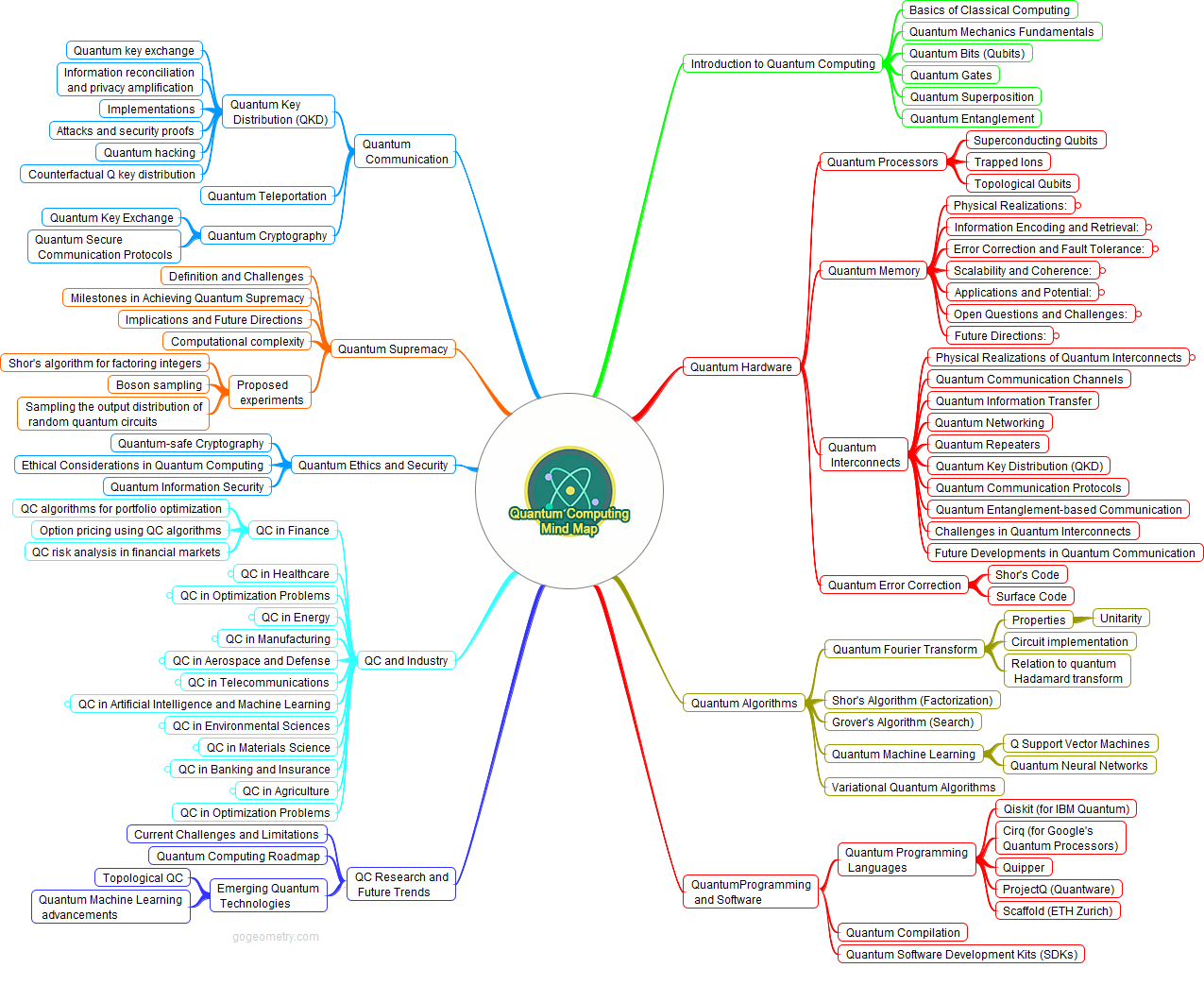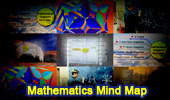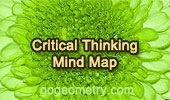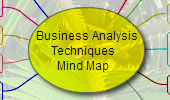Unlocking the Quantum Realm: A Comprehensive Mind Map on Quantum Computing Advancements and Applications

Quantum whispers hum,
Bits entwined in cosmic dance,
Algorithm's chance,
In the realm of qubits' song,
Computing's quantum trance.
Principal Topics of Quantum Computing
| Topic | Description |
|---|---|
| Introduction to Quantum Computing | Foundational concepts, including qubits, gates, superposition, and entanglement. |
| Quantum Hardware | Exploration of various quantum processors, such as superconducting qubits, trapped ions, and quantum dots. |
| Quantum Algorithms | Study of quantum algorithms, including Quantum Fourier Transform, Shor's Algorithm, and Grover's Algorithm. |
| Quantum Programming and Software | Overview of quantum programming languages, compilation, and software development kits (SDKs). |
| Quantum Communication | Discussion on secure and efficient transmission of quantum information, quantum teleportation, and quantum cryptography. |
| Quantum Error Correction and Fault Tolerance | Explanation of quantum error correction codes and fault-tolerant protocols. |
| Scalability and Coherence | Topics related to building large-scale quantum memories and extending coherence times. |
| Applications and Potential | Exploration of quantum computing applications in finance, healthcare, optimization problems, and more. |
| Quantum Ethics and Security | Considerations related to quantum-safe cryptography and ethical aspects of quantum computing. |
| Quantum Computing and Industry | Applications of quantum computing in various industries, such as finance, healthcare, and manufacturing. |
| Quantum Computing Research and Future Trends | Discussion on current challenges, quantum computing roadmap, and emerging quantum technologies. |
Quantum Computing Visualized: A Comprehensive Mind Map
A mind map for quantum computing can be a powerful tool for organizing,
understanding, and communicating the intricate aspects of this complex
field. Whether for individual study, collaborative work, or educational
purposes, the visual and hierarchical nature of mind maps enhances the
learning and exploration experience.
The information in the Quantum Computing Mind Map is based on the responses of OpenAI's GPT-3.5 model and Google Bard, which are large language models trained on a massive dataset of text and code. The data used to train these models includes books, research articles, and educational materials published up to August 2023.
Graphic Organizers
Graphic organizers and mind maps serve as visual tools for representing information, concepts, or ideas. While graphic organizers usually follow a hierarchical structure with main ideas branching into supporting details, mind maps offer a more free-form approach, allowing users to connect ideas in a way that makes sense to them. These tools are valuable for organizing and structuring information, promoting learning and retention, and fostering creativity and problem-solving skills.


